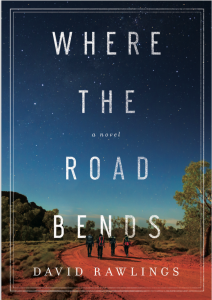
Image by Gino Crescoli from Pixabay
Society doesn’t like stereotypes. Those general descriptors based on culture, race, religion, gender, age that tar the entire body of a group with one small brush.
They can be unfair – none of us like to be labeled with the characteristics of a group we belong to, especially if they aren’t “us”.
There’s another group that doesn’t like stereotypes. Readers.
Stereotypes can impact our writing. Our imaginary friends carry our story, and it’s their believability and relatability that determine how memorable our writing is.
Here are some ideas to go beyond the stereotype with your characters.
- Select a characteristic that is the opposite of the stereotype.
Something that jars the reader because it’s unexpected is a good way of being memorable. They stand out because it’s the complete opposite of what the reader expects. Now, it has to be true to the character – and what you’re writing – but if you want to stand out in a crowded marketplace, you have to be different. So give your character a characteristic that is the complete opposite with the usual stereotype.
Forgive me for diving into stereotypes, but this is what I mean:
- The 80-year-old who’s an IT guru
- The Italian grandmother who would prefer that her granddaughter lost weight and berates her for eating too much
- A young person talking about ‘the old days’
- The Southerner who occasionally drops into the flat vowels of Boston or a Texan who speaks quickly
- And in my case, an Australian that doesn’t say “g’day” all the time … instead they use American turns of phrase.

Give them an unusual tic or quirk just before they do something significant.
I’ve had a number of characters over the years that have had a quirk. In
The Camera Never Lies, one of the key characters is Simon, the mysterious film lab owner who is processing the photographs that reveal the protagonist’s secrets. Before he says or does something that’s relative to the protagonist’s story, he rises on the balls of his feet.So what can your character do that is unusual? What is their nervous habit that gives them life; that I can picture as a reader to help cement them in my mind?
What I find this does is it gives the reader an action point that increases engagement. The action stands out, so what follows has more impact. Each time it happens it flags something of significance – providing it’s not overdone of course.
There are ways you can use the stereotype to your advantage, as a way to create memorable characters to carry your story.
So which ways will you turn stereotyping on its head?
Four friends reconnect fifteen years after graduation on a promised trip to the Australian outback. Time has changed them. At graduation life was all about unfulfilled potential. Fifteen years down the track, it feels a lot like regret.
As they get lost in outback Australia they find more than harsh beauty of an unspoilt land… … they discover how the road of life delivered them to where they are now.
And getting back requires them to determine where they’ll go from here.

Based in South Australia, David Rawlings is an award-winning author, and a sports-mad father-of-three with his own copywriting business who reads everything within an arm’s reach. He writes
that take you deeper into life, posing questions of readers to explore their own faith and how they approach life.Where the Road Bends – a novel based in outback Australia – is out now! Why not take a virtual vacation during your time at home?
David’s debut novel – The Baggage Handler – won the 2019 Christy Award for First Novel. His second novel – The Camera Never Lies – focuses on honesty in relationships and is now available.
He is currently signed with Thomas Nelson and represented by The Steve Laube Agency.

